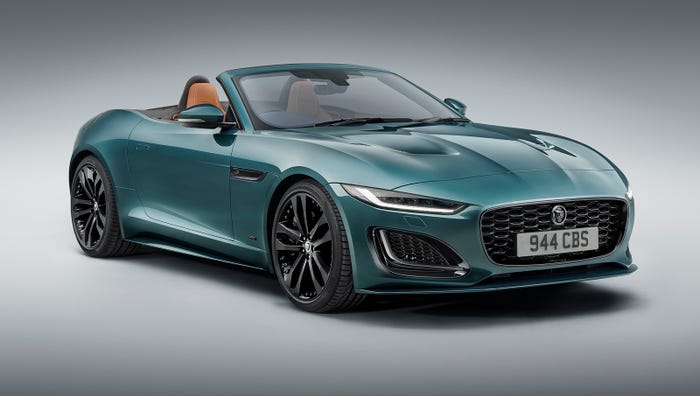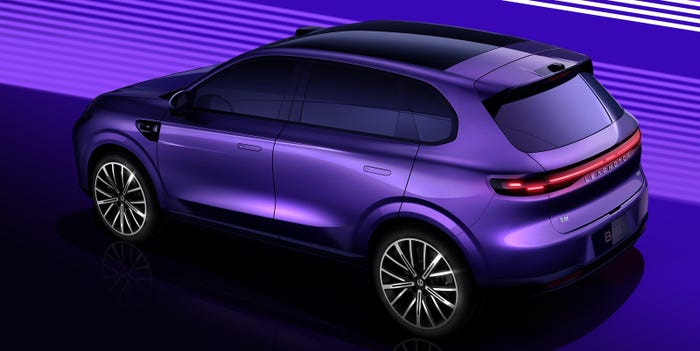Chevy Colorado, GMC Canyon Shout Down Skeptics
GM says the Colorado, the volume seller of the two pickups, is the fastest-selling truck in the U.S. “Dealers will take every one they can get,” says Colorado marketing chief Jessica Rogers.

When General Motors offered its first glimpse of the Chevrolet Colorado and GMC Canyon two years ago, company executives promised the redesigned midsize pickups would rekindle America’s love affair with small trucks and pull new buyers to the automaker.
To say those claims were met with skepticism would be an understatement, given years of being trounced by the Toyota Tacoma and Nissan Frontier. A prevailing market dynamic where domestic consumers often would choose a fullsize pickup over a midsize one because the pricing spread was so narrow also dimmed the spotlight on the new GM trucks.
Fast forward eight months into the launch of the Colorado and Canyon and it appears the pickups are shouting down those skeptics.
“It has far exceeded expectations,” says Jessica Rogers, manager-marketing and advertising for the Colorado.
GM says the Colorado, the volume seller of the two pickups, is the fastest-selling truck in the U.S. The average Colorado spends 18 days on a dealer’s lot, which is a heartbeat compared to the 30-day turn rate the industry typically considers brisk.
“Dealers will take every one they can get,” Rogers tells WardsAuto.
So far this year, GM has delivered 75,992 units of the Colorado and Canyon, or roughly 9,500 per month, as production at the automaker’s Wentzville, MO, assembly plant has hit its stride. Although that remains a far cry from the 122,064 deliveries through August of the Toyota Tacoma, the GM products are stealing market share from the segment’s longtime leaders and causing other automakers to reconsider their entries, or lack thereof, in the segment.
The Colorado and Canyon combined for 32.4% of the midsize pickup segment at the end of August, a meteoric rise from nearly zero a year ago. The Tacoma’s share of the segment has remained relatively steady since the beginning of the year and finished August at 55.2%.
However, the Tacoma’s share is down compared with 2014 and 2013, when the pickup owned 61.1% and 65.1% of the market, respectively. The Frontier’s share also has dwindled. Nissan’s offering controlled 25.7% of the segment in 2013 and 29.3% in 2014. So far this year, its share has eroded to 17.7%.
“We are introducing a new customer to the Chevrolet brand,” Rogers says.
But according to consultancy IHS, the Colorado and Canyon are seeing some familiar faces, as well. The pickups attract owners of like-branded vehicles at a rate of about 43% and a handful of those customers come from their fullsize brothers, although the buyers may be adding another Chevy or GMC to their garage rather than disposing of one.
“It’s unavoidable that the smaller trucks will get some buyers from the larger trucks,” says Stephanie Brinley, an analyst with IHS. “Evidence does not suggest that the (fullsize) trucks are being dramatically hurt by the interaction.”
Rogers says GM expected some defection from its bigger trucks to the smaller ones and the pace has been on par with previous-generation Colorado and Canyon.
Toyota No.1 on Hit List
IHS data shows that after its own brand the Colorado snags buyers from Toyota, Ford, Honda and Nissan. For the Canyon, it’s Toyota and Ford followed by Buick and Honda.
GM data shows the Colorado grabbing 45% of its non-Chevrolet customers from the F-150, followed by the Tacoma.
The migration of F-150 customers to the Colorado partly may motivate a rumored return of the Ford Ranger midsize pickup by 2018. Ford reportedly will build the truck in Michigan.
Further underscoring the new vigor in the segment, a Jeep-branded midsize pickup in the spirit of the former Comanche could be in the works at FCA US, and the popular Santa Cruz concept shown in Detroit this year by Hyundai appears on the verge of a production announcement. In addition, in ’16 the Tacoma sees its first stem-to-stern redesign since 2004 and the Frontier goes all-new in 2017 as an ’18 model.
The midsize pickup segment’s share of light-vehicle sales also is up. The trucks claimed 2.1% of U.S. deliveries at the end of August, compared with 1.5% in 2014 and 1.6% in 2013. Sales overall in the segment are up 53%.
Pressed about any satisfaction GM might gain from fresh competitor interest in the segment, Rogers expresses modesty.
“The (competitive-product) news will take care of itself,” she says. “We’ll just keep plugging away and keep our heads down and do what we do best.”
GM hopes to sustain momentum of its midsize pickups by continuing to release special-edition products, such as the Colorado Midnight and Trail Boss trim levels. The automaker’s game plan for the pickups was to offer a long line of dealer-installed personalization items, but the strategy has expanded to unique treatments out of the factory.
“It has allowed us to speak to a group of buyers we may not necessarily have been marketing to before, and it’s built some new enthusiasm in Chevy products,” Rogers says.
And like every new-vehicle launch, there are some surprises. Rogers says the Colorado is pulling more female buyers, about 10%, than expected. The truck also is more popular in diversity markets than anticipated, especially among Hispanics because Southern California is a major market for midsize pickups.
About 70% of Colorado buyers choose the 3.6L V-6 over the 2.5L 4-cyl., and 80% take delivery of a crew-cab model over the extended cab.
The fortunes of the Colorado and Canyon may improve even more in the coming months as both brands roll out a diesel option, a first for the segment, although the Volkswagen emissions scandal could be a headwind.
About the Author
You May Also Like





